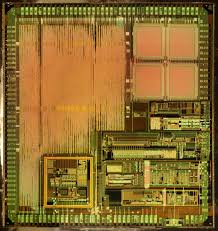We can Read MCU PIC16C717 Eeprom, please view the MCU PIC16C717 features for your reference:
The LCD driver module can be configured into four multiplex types:
Static (only COM0 used)
1/2 multiplex (COM0 and COM1 are used)
1/3 multiplex (COM0, COM1 and COM2 are used)
1/4 multiplex (all COM0, COM1, COM2 and COM3 are used;

The LMUX<1:0> setting decides the function of RB5, RA2 or either RA3 or RD0 pins (see Table 9-1 for details) from MCU eeprom reading.
If the pin is a digital I/O, the corresponding TRIS bit controls the data direction. If the pin is a COM drive, then the TRIS setting of that pin is overridden. The LCDSEn registers are used to select the pin function for each segment pin. The selection allows each pin to operate as either an LCD segment driver or as one of the pin’s alternate functions. To configure the pin as a segment pin, the corresponding bits in the LCDSEn registers must be set to ‘1’ eeprom from MCU.
If the pin is a digital I/O, the corresponding TRIS bit controls the data direction. Any bit set in the LCDSEn registers overrides any bit settings in the corresponding TRIS register.
The LCDDATAx registers contain bits which define the state of each pixel. Each bit defines one unique pixel. Register 9-4 shows the correlation of each bit in the LCDDATAx registers to the respective common and segment signals after MCU reading.
Any LCD pixel location not being used for display can be used as general purpose RAM. LCD waveforms are generated so that the net AC voltage across the dark pixel should be maximized and the net AC voltage across the clear pixel should be minimized. The net DC voltage across any pixel should be zero.
The COM signal represents the time slice for each common, while the SEG contains the pixel data. The pixel signal (COM-SEG) will have no DC component and it can take only one of the two rms values. The higher rms value will create a dark pixel and a lower rms value will create a clear pixel MCU eeprom reading.
As the number of commons increases, the delta between the two rms values decreases. The delta represents the maximum contrast that the display can have.
The LCDs can be driven by two types of waveform: Type-A and Type-B. In Type-A waveform, the phase changes within each common type, whereas in Type-B waveform, the phase changes on each frame boundary. Thus, Type-A waveform maintains 0 VDC over a single frame, whereas Type-B waveform takes two frames before reading MCU.

